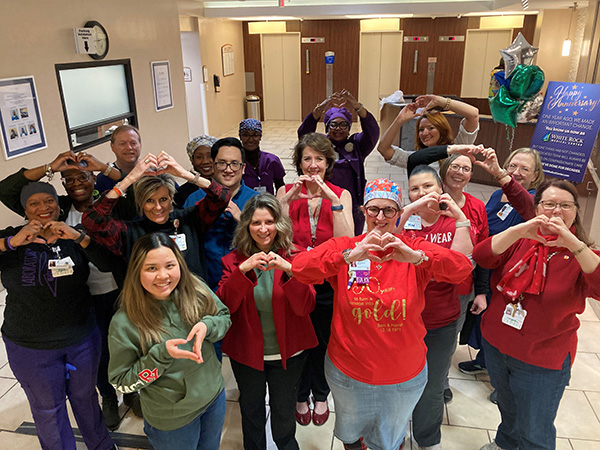Bethany Brunson, RN, White Rock Medical Center’s chest pain coordinator, takes heart health seriously. It’s her job, but also a calling.
As chest pain coordinator, Brunson monitors and analyzes heart care at White Rock, ensures performance measures are in place and educates staff and patients alike about heart care and healthy heart maintenance. Heart care programs like White Rock’s include elements such as staff and patient education, guidelines and goals for clinical practices, monitoring performance metrics and regular process review.
February is a special time for Brunson because it’s the month that the American Heart Association (AHA) focuses on raising awareness about cardiovascular health. Feb. 3 was AHA’s National Wear Red Day to raise awareness about women’s cardiovascular health, in particular. Many employees wore red to join the cause.
“Cardiovascular disease is the number one killer of women, responsible for one in three deaths. That’s more than all forms of cancer combined,” explained Brunson.
But heart health is also personal for her.
“Cardiovascular health is important to me. My mom had a stroke on Feb. 20, making heart health education even more important to me personally. Fortunately, her residual symptoms are minimal, and she was discharged home on Feb. 23.”
For every employee who wore red on Wear Red Day or correctly answered a question regarding heart health, Brunson donated $1 to the American Heart Association. Combined with donations from physicians and employees, she donated $515 to the AHA to help fund research and education to prevent cardiovascular disease.
Also during the month of February, Brunson walked nearly 50 miles to raise donations for the AHA. She surpassed her personal goal, donating $1,080 to AHA.
“Heart health is important to me because it can lead to so many other health issues. Cardiovascular vessels are usually no more than 3 millimeters, or about 0.1 inch. I’ve witnessed revascularization in a heart attack patient in the cath lab. This procedure can restore blood flow to blocked arteries or veins,” explained Brunson. “It really made me appreciate the complexity of the heart even more and the critical importance of the care we provide.”
3.8.23

